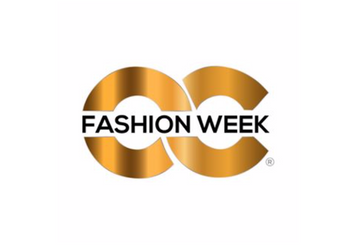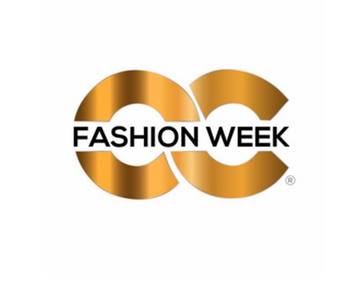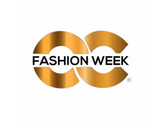Hair & MUA Guidelines OC Fashion Week SS21 September 2020
A Message from Pro Make-Up Beauty Advisor
Hair & MUA Guidelines OC Fashion Week SS21 September 2020
September 17th, 2020
Cover Letter
From: Diana Mattes
To: All participating Hair Stylists and Makeup Artist for OCFW SS21
Dear Artists,
Welcome! This document is designed specifically for Hair & Makeup (H&MU) artists, and may include some information already presented in the COVID19 document that all general participants received. The following pages are a sincere attempt to give credible, useful information for our ever-evolving and changing standards that we face in our beauty industry.
This OCFW SS21 Experience can help showcase our talents while taking state and local COVID19 guidelines seriously. The following document is designed to be a template for OCFW, and may be subject to change according to developing CDC, FDA, EPA and other legitimate standards from industry authorities as they become available.
We are practicing Social Distancing whenever possible during beauty services, as it is now a known risk. We must use our training and knowledge to mitigate the risks and be as safe as possible.
Implementing new procedures and practices is not easy. After all, no one is perfect, but we can support each other and lead by example, doing our best. If you have any questions after reading this document and the suggested reading from www.themakeupstandard.org , or need assistance please feel free to contact me, and I’ll do my best to steer you in the right direction.
I look forward to meeting and working with you during this season’s OCFW.
Take care & stay safe!
Diana
IG @scoutyspice
Tel#: (949) 231-9579
Hair & MUA Guidelines OC Fashion Week SS21 September 2020 p 1/2
This page ‘Essential’
The following guidelines are taken from:
www.themakeupstandard.org & www.barbicide.com
Welcome to OCFW! Your contribution to this seasons experience is greatly appreciated. This is a great opportunity to showcase your talents in our ever-evolving pandemic environment. Demonstrating ‘Best Practices’ services to the attendees of this experience can uplift our beauty community.
Doing these 8 things—reduces 80% of the risk: (credit: www.themakeupstandard.org)
- Wear a mask at all times & face shield while working.
- Socially distance—only talent and artist in working area. 6’ from anyone else.
- Wash hands properly—20 seconds with soap & water before work & after tasks, & at the end of the day.
- Sanitize station, chair, tools & products before and during services.
- MUAs—No Double-dipping. Make ‘working stock’ and/or a ‘ghost’ to work from of products.
- Brushes & tools—use a separate set for each client/talent, MUA—use disposables for eye & lips.
- Disinfect tools—wipe down contaminated areas after working. Disinfect tools properly & let air-dry completely.
- Properly manage all PPE—safely dispose/collect (in plastic bag) to wash all PPE at the end of the day.
Education! It is important to know why we need infection control practices/controls, please learn more, as this will strengthen your commitment to safety and enhance your knowledge so you can speak with authority about doing business in this pandemic environment.
Please use these free resources to refresh/learn ‘best practices’ and/or to obtain hygiene certificates current and applicable to your industries:
www.themakeupstandard.org –a new great, legit resource for MUAs, much to glean for others in the beauty community
www.barbicide.com/certification –free certification, YT videos, articles and more for salons & stylists
https://www.lucasproducts.com/lucas-cide-certification-signup/ --free certification for beauty hygiene
Recommended reading is found at www.themakeupstandard.org ; read the MASS (Makeup Artist Sanitation Standard). This is great, medically & scientifically sound direction for MUAs and others in the beauty field to follow.
Things that stand out: MUAs—‘aseptic technique’; ‘working stock’ where possible; working from a ‘ghost’; For both H&MU artists—reducing the amount of products that you bring with you; definition of ‘cleaning’ & ‘disinfecting’; PPE; general cleanliness of kit; station; tools; clients; planning; etc.
Take care of yourself: (credit: YT video: Barbicide “Going Back to Work Safely—Best Practices”—Leslie Roste-RN)
Outside of the medical field, we (in the beauty industry) touch more strangers than anyone.
You are depending on a healthy immune system.
- Use anti-biotics correctly. (If prescribed, follow Dr’s direction, don’t take your friends/family’s partial prescription.)
- Stop smoking & exposure.
- Make 8 hours of sleep a habit.
- Make 8 glasses of water a habit.
- Stay home when sick!
- Get immunized (HepB, Tetanus, Pneumonia, Influenza)
- Exercise…doesn’t have to be painful, but consistent.
- Eat your vitamins, by eating right.
- Keep your hands to yourself. Mitigate risk (even outside work).
Hair & MUA Guidelines OC Fashion Week SS21 September 2020 p 1/2
General points for consideration: (Some are applicable to your jobsite, some are of general benefit.)
- Why we need infection control—you are more likely to practice heightened hygiene standards when you know why.
- How we can implement infection control—find out what is particular to your artistry.
- Refresh and/or learn—reviewing information or learning new information can result client confidence.
- Education/Certificates, show commitment to best practices—higher than state baseline (intersection of previous hygiene standards with now heightened COVID19 standards).
- Difference between cleaning & disinfecting (C&D)—they aren’t the same, important to practice both correctly.
- What can I disinfect? How can I do it properly?—know what is applicable to your job.
- Be conscious of what you touch, you are most at risk—touching multiple clients. ‘Hot-spots’—C&D all non-porous high-contact areas after a service or regularly throughout the day (i.e.—knobs, light switches, etc,).
- Clients/talent need to feel comfortable/safe with services—Clients have had months of information, they know more about cleaning & disinfecting than ever before. Ensure all items are cleaned & disinfected (appliances, tools, all non-porous items/surfaces possible). Be prepared for questions/expectations, have answers. (Expect client PPE.)
- Think of clients being immune-compromised, they should be & feel safe. Let them know they can ask questions.
- Place last layer of protection in front of customer—clients can visualize what you are doing.
- Give a safety message “I’m disinfecting this for the next customer” (while you are disinfecting an item after a service)
- All C&D (cleaned & disinfected) implements should be in C&D properly labeled containers.
- Make sure all disposable/single-use items are new & properly stored in labeled containers. Pull clean disposables out in front of your client.
- Clean all soft-surfaces regularly. Laundry—wash with detergent in hot water & dry until no moisture & hot-to-the-touch. Store linens in a closed cabinet or proper container.
- Remove all non-essential items from your area.
- No more hand-shaking, find your own way to greet that is sincere to you.
- No food/drink during service.
- Gate-keeper approach (no more walk-ins), keep wait areas unpopulated (need time to turn-over station, take a break).
- Contact-tracing (have names/phone#s of clients).
- Payment—discontinue cash, or use no-touch (Venmo, Samsung, Apple pay). Sanitize POS units after each use.
- PPE—Masks>>YES! They work. Offer them to patrons. Change mask between clients or after touching it, bring mulitiples to work. Practice wearing mask at home to know how it fits before you wear it to work.
- PPE—Gloves>>Not necessary. Properly cleaned/sanitized naked hands are safer than gloves used for multiple services. Availability may become an issue. If so—nitrile glove best choice. Latex-allergies can be severe/life threatening.
- Temperature taking—only 23% of COVID19 positive individuals have fevers. Can create false sense of security.
- 60% of COVID19 positive individuals have very mild or are asymptomatic that they are out & about doing their daily living, and are out spreading the virus.
- Apply universal/standard precautions that you’ve learned, or know (-maybe need to refresh/learn new/again?).
- Handwashing is the Gold-standard. Proper handwashing works better than hand-sanitizer.
- Wash hands with soap & lukewarm water for 30 seconds after eating, smoking & using the restroom. Must
Hand wash before & after servicing a client. Tell/show them that you are washing your hands.
- Have hand sanitizer available for clients to use.
- Maintain your hands with lotion to keep skin integrity. (Avoid washing with hot water)
- Social distancing 6’ not possible for beauty services, therefore there is a known risk in performing & receiving services. You cannot perform a wholly safe service. You know that, your client knows that. ‘I understand your concerns about social distancing, I am uniquely prepared to mitigate risks and make this service as safe as possible.’ Let clients know your education in infection control principals and additional steps you take to keep them and yourself as safe as possible. You have the education and knowledge to make this as safe as possible.
- Signage—communicate with clients important points/expectation/etc.
- No one works or gets a service when sick. Cancelled service—‘I’m sick’…then you tell them that you are putting them on a 14-day hold for services.
Enjoy, stay safe & provide the best services possible!



